Basic Information
-
Targeting strategy

-
Gene targeting strategy for B-hTLR9 mice. The exon 2 of mouse Tlr9 gene that encode the extracellular domain was replaced by human TLR9 exon 2 in B-hTLR9 mice.
-
mRNA expression analysis

-

Strain specific analysis of TLR9 gene expression in WT and hTLR9 mice by RT-PCR. Mouse Tlr9 mRNA was detectable only in splenocytes of wild-type C57BL/6 mice (+/+). Human TLR9 mRNA was detectable only in homozygous B-hTLR9 mice (H/H), but not in wild-type mice.
-
Protein expression analysis in B cells

-
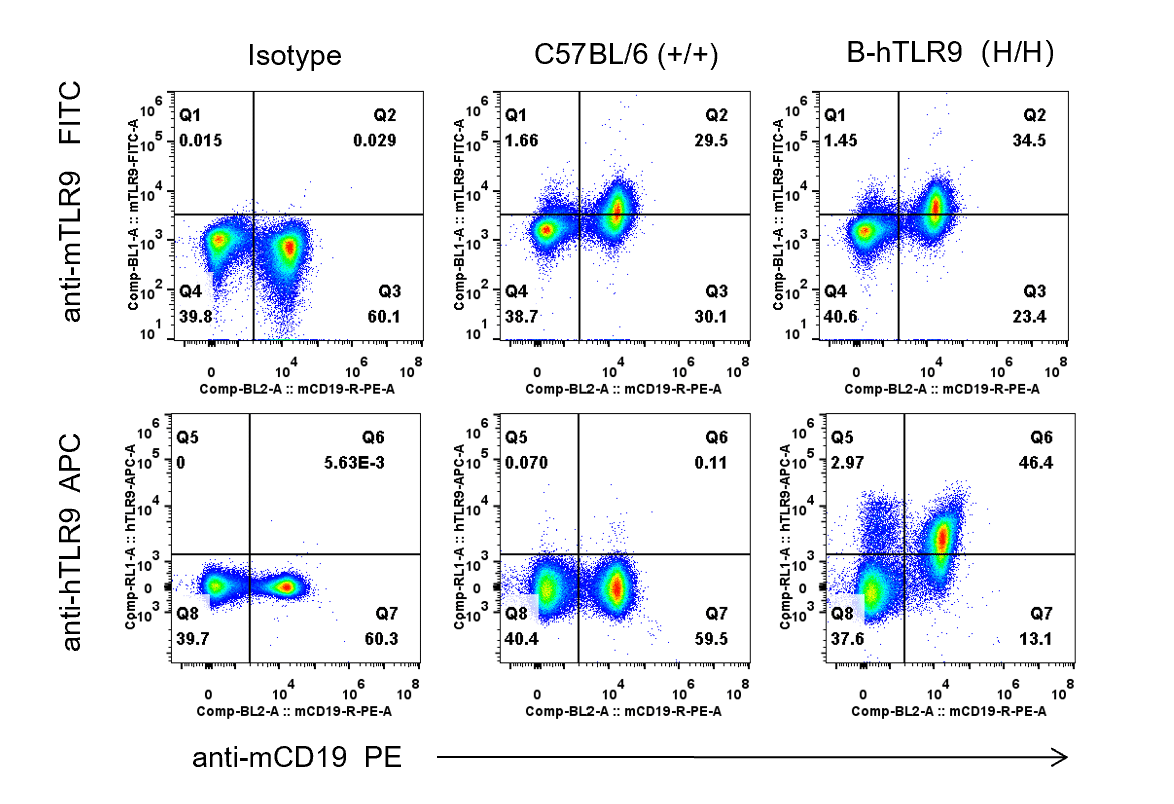
Strain specific TLR9 expression analysis in homozygous B-hTLR9 mice by flow cytometry. Splenocytes were collected from WT and homozygous B-hTLR9 (H/H) mice, and analyzed by flow cytometry with species-specific anti-TLR9 antibody. Mouse TLR9 was detectable in WT mice and homozygous B-hTLR9 due to the anti-mTLR9 antibody is cross-reactive between mice and humans. Human TLR9 was exclusively detectable in homozygous B-hTLR9 but not WT mice.
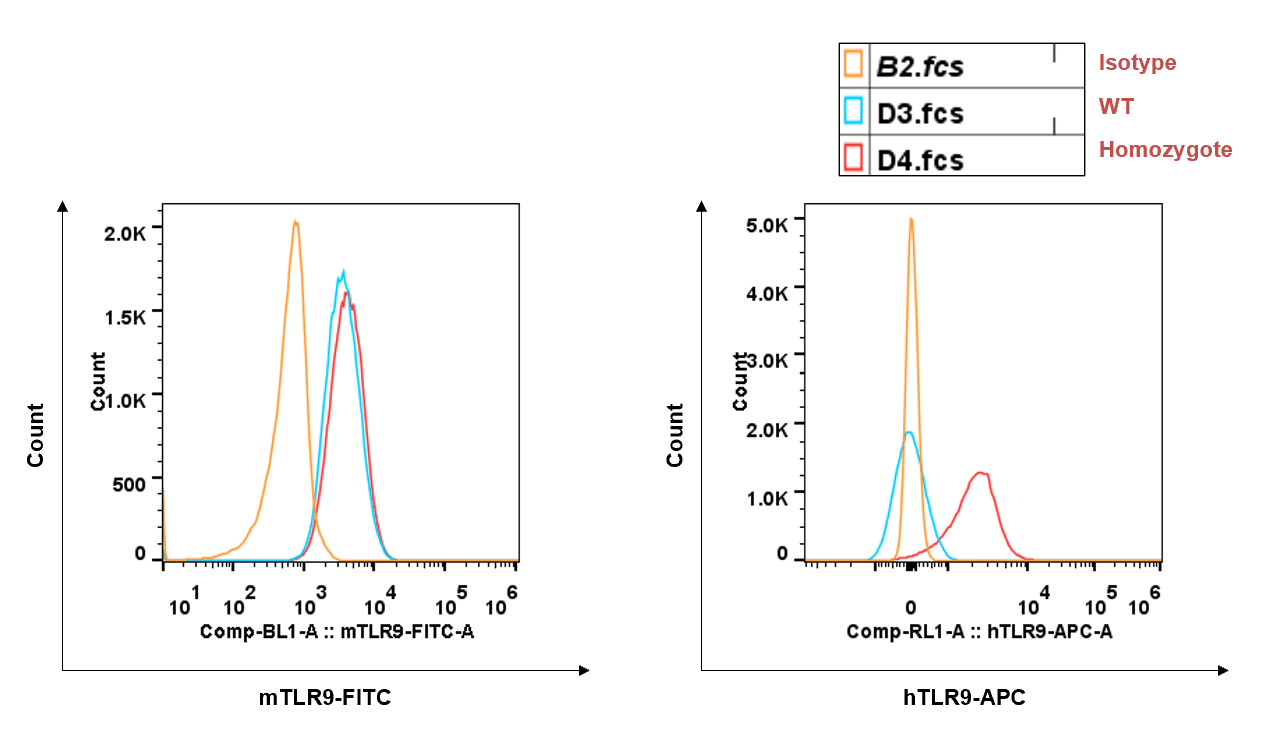
-
Protein expression analysis in NK cells

-
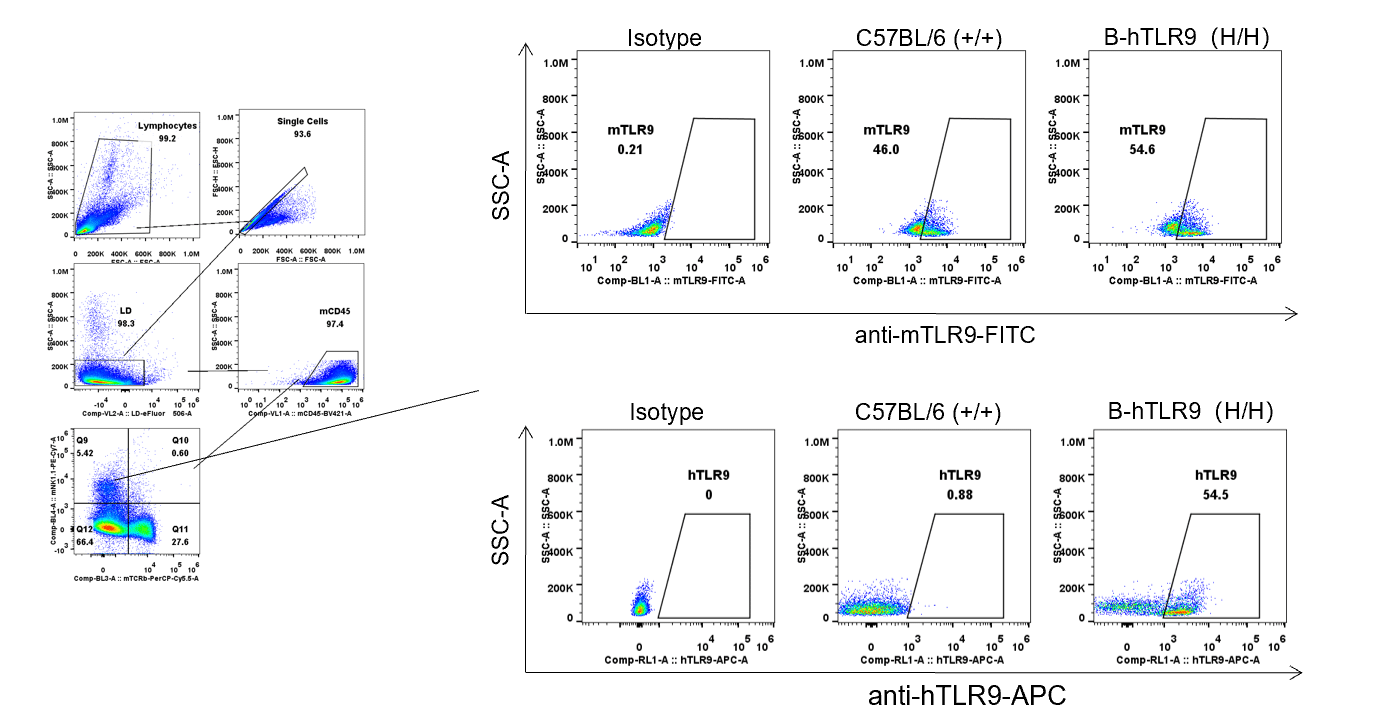
Strain specific TLR9 expression analysis in homozygous B-hTLR9 mice by flow cytometry. Splenocytes were collected from WT and homozygous B-hTLR9 (H/H) mice, and analyzed by flow cytometry with species-specific anti-TLR9 antibody. Mouse TLR9 was detectable in WT mice and homozygous B-hTLR9 due to the anti-mTLR9 antibody is cross-reactive between mice and humans. Human TLR9 was exclusively detectable in homozygous B-hTLR9 but not WT mice.
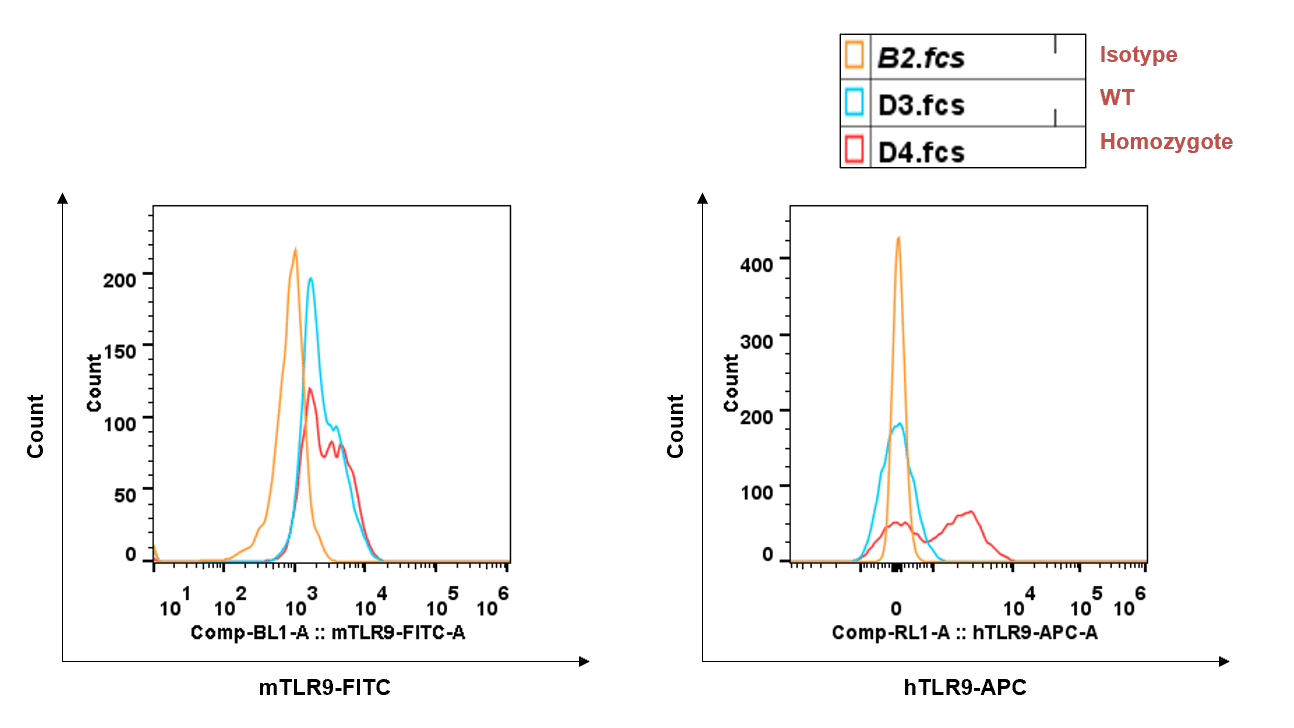
-
Protein expression analysis in macrophages

-

Strain specific TLR9 expression analysis in homozygous B-hTLR9 mice by flow cytometry. Splenocytes were collected from WT and homozygous B-hTLR9 (H/H) mice, and analyzed by flow cytometry with species-specific anti-TLR9 antibody. Mouse TLR9 was detectable in WT mice and homozygous B-hTLR9 due to the anti-mTLR9 antibody is cross-reactive between mice and humans. Human TLR9 was exclusively detectable in homozygous B-hTLR9 but not WT mice.

-
Function analysis

-
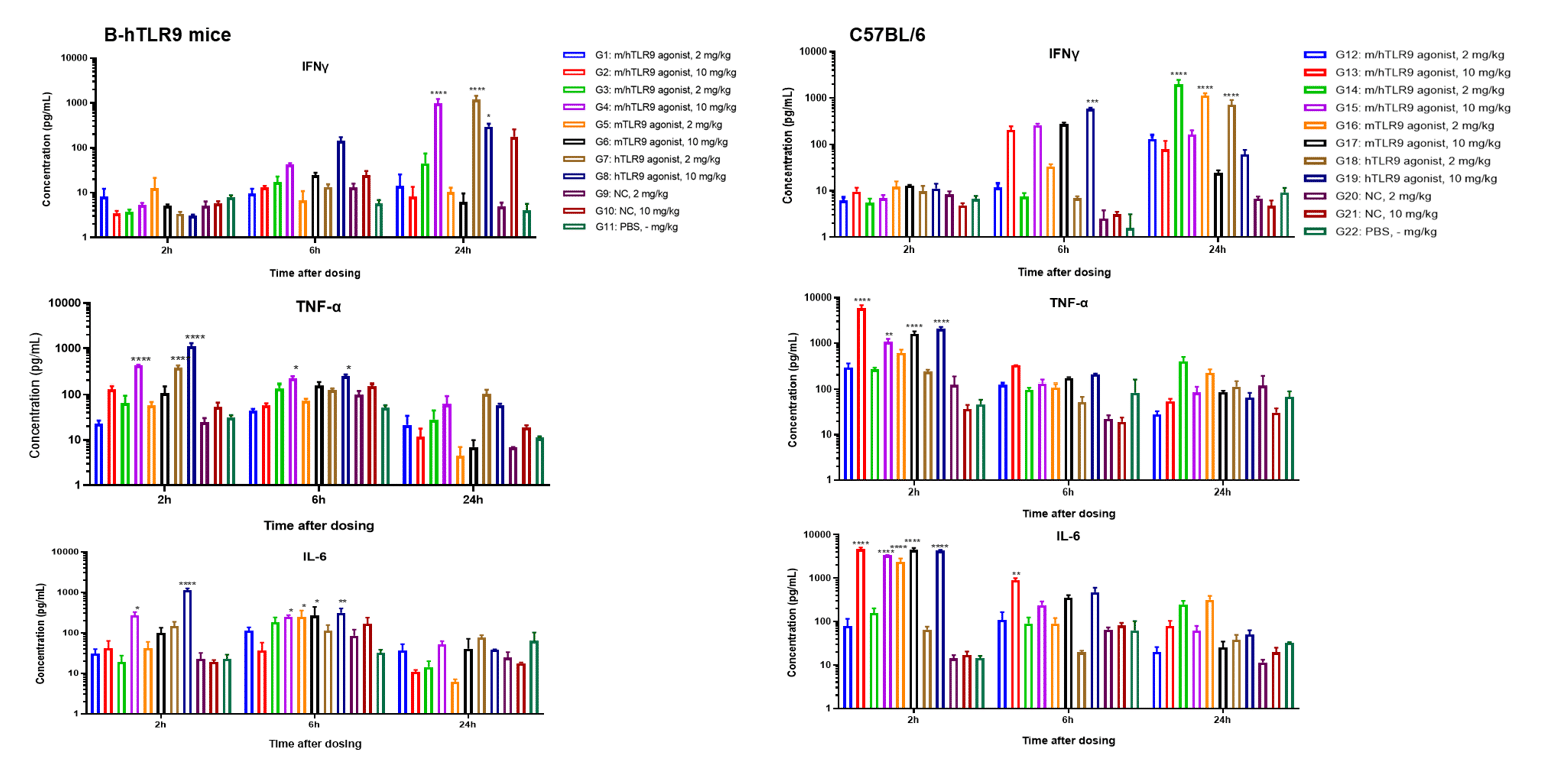
Strain specific mIFN–γ, mTNF–α and mIL-6 expression analysis in homozygous B-hTLR9 mice by ELISA. Wild-type C57BL/6 mice (+/+) and homozygous B-hTLR9(H/H) were treated with TLR9 agonists at different doses, then blood were collected at 2 h, 6 h and 24 h post s.c. injection and analyzed by ELISA with species-specific mIFN-γ, mTNF-α and mIL-6 ELISA kit.
-
Tumor growth curve & Body weight changes

-
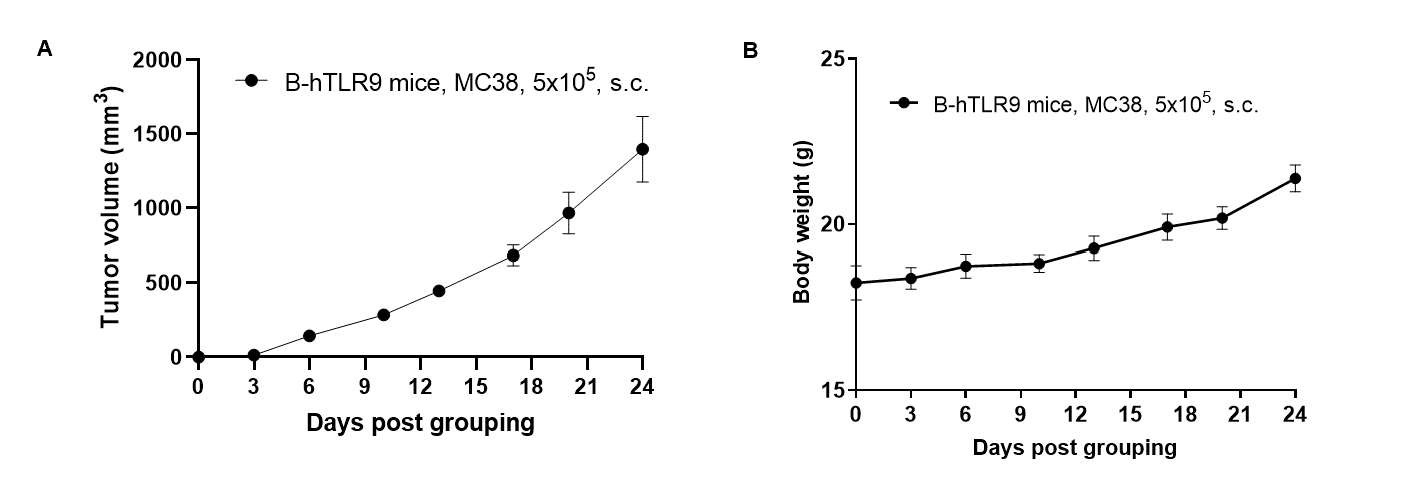
Subcutaneous homograft tumor growth of MC38 cells. MC38 cells (5×105) were subcutaneously implanted into B-hTLR9 mice (female, n=6). Tumor volume and body weight were measured twice a week. (A) Average tumor volume ± SEM. (B) Body weight (Mean± SEM). Volume was expressed in mm3 using the formula: V=0.5 X long diameter X short diameter2. As shown in panel A, B-hTLR9 mice were able to establish tumors in vivo and can be used for efficacy studies.


